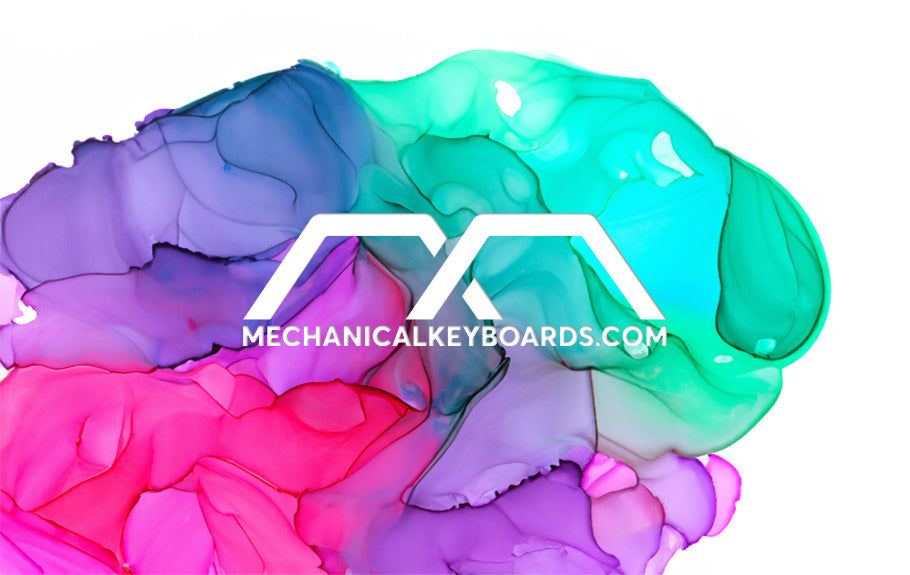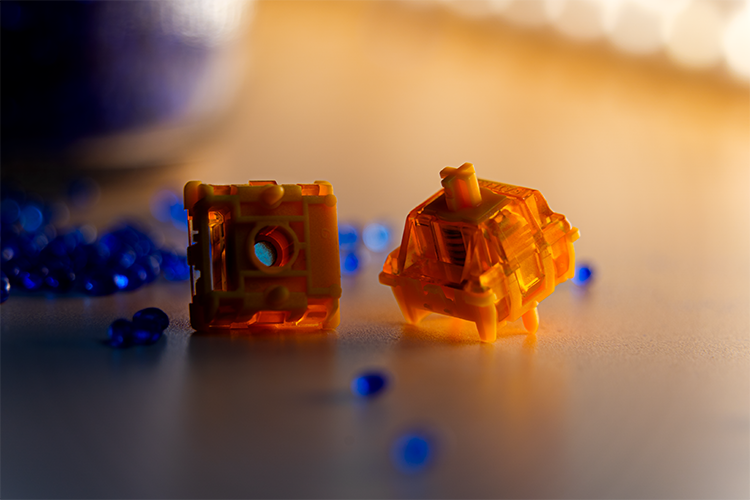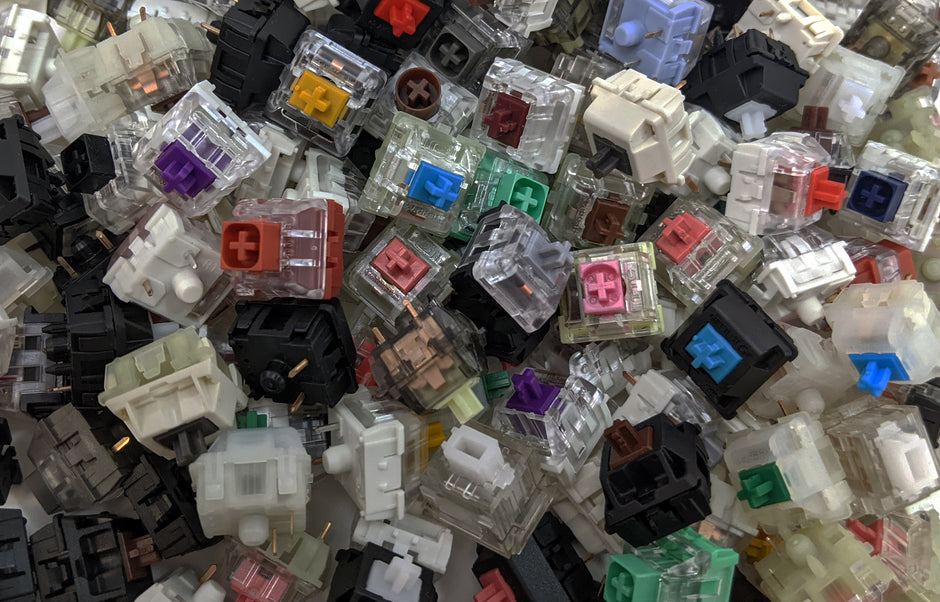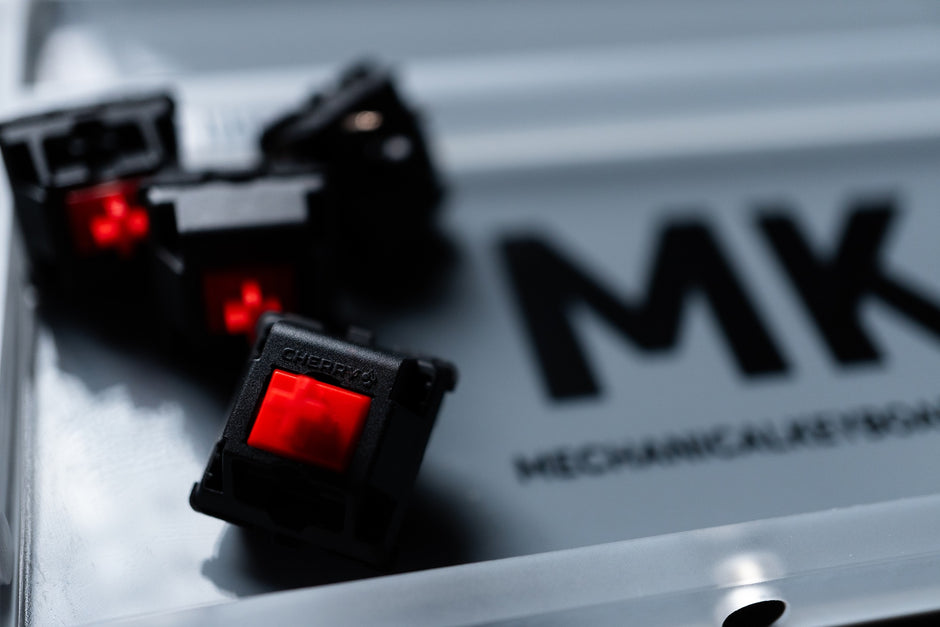Mechanical keyboards offer a unique, high-quality alternative to common membrane keyboards, and they have quickly become a favorite among typists, gamers, and programmers alike.
So, what's so special about mechanical keyboards?


Understanding the Basics:
Put most simply, a mechanical keyboard is a type of keyboard that uses individual mechanical switches for each key.
Unlike membrane keyboards, where pressing a key pushes down on a single keyboard-sized membrane to complete a circuit, mechanical keyboards rely on having a dedicated physical switch beneath each and every keycap.

These switches consist of multiple moving parts -- including a spring and a stem -- which actuate when the key is pressed. The fluid combination of these movements is what registers your keystroke.
Tactile Feel and Auditory Feedback:
Two of the most distinctive features of a mechanical keyboard are its tactile feel and its auditory feedback. Each key press results in a satisfying physical response and a distinct sound, providing the user with immediate confirmation of input.
This feedback not only enhances typing accuracy, it also creates a more engaging and enjoyable typing experience. For many users, the sensation of typing on a mechanical keyboard can be likened to playing a musical instrument, where each keystroke produces a unique and satisfying response. To describe the different physical "feels" of specific key switches, you'll often see terms like "tactile", "clicky", and "linear."
"Tactile" describes a switch with a physical, sensory bump during the keypress, giving you subconscious peace of mind as you type that your keystrokes are being registered. This type of switch is used by typists and gamers alike.
"Linear" describes a switch with no tactile bump. A linear switch is often favored by gamers, especially for games requiring fast input (like first-person shooters and rhythm games.)
"Clicky" means exactly what it sounds like. This type of switch is known for its loud, audible clicking sound as you type. Similar to switches found on a vintage computer keyboard or a typewriter, a clicky switch is often favored by typists.
"Silent" switches are designed to minimize the noise produced during typing. They usually have a soft material that dampens the sound of the switch actuation and bottoming out, making them ideal for office environments or shared spaces.

Variety of Switches:
One of the strongest appeals of mechanical keyboards is the wide variety of switch options available. Different switches offer varying levels of tactile feedback, actuation force (how firm they are to press), and audible click. This vast switch variety allows users to customize their typing experience to suit their exact preferences.
Switch manufacturers like Cherry, Gateron, Kailh, TTC, and others offer a range of options to satisfy many typing styles and preferences.
Many keyboards are hotswap -- a term which means the switches can be changed out between compatible types very easily with no tooling or electronics knowledge required, plug-and-play style.

Durability and Longevity:
Another significant advantage mechanical keyboards have is durability and longevity. Unlike membrane keyboards, which wear out over time due to slack in elasticity from repeated use, mechanical switches are specifically designed to withstand many millions of keystrokes.
This durability ensures that the mechanical keyboard will last for years to come, and importantly, maintain consistent typing performance for you throughout its lifespan.
The modular design of a mechanical keyboard also allows for easy replacement of individual switches, further extending its lifespan and expanding the many ways you can customize your keyboard.
Customization and Personalization:
Whether you're using it at the office, or gaming for fun at home, there are many ways to make your keyboard completely unique!
With customizable keycaps, variable RGB lighting choices, and user-programmable macros and layers, enthusiasts can personalize every aspect of their keyboard to create a truly unique typing experience. Advanced users sometimes add lubrication to their switches and stabilizers, or further customize with sound dampeners and open-source firmware like QMK.
RGB lighting choices, and user-programmable macros and layers, enthusiasts can personalize every aspect of their keyboard to create a truly unique typing experience. Advanced users sometimes add lubrication to their switches and stabilizers, or further customize with sound dampeners and open-source firmware like QMK.
Many keyboards today support single-key LED programming, meaning that you can adjust the backlighting brightness and color of each individual key. This is generally done via easy-to-understand, readily available software, so that even a beginner can find the settings and achieve the exact aesthetic they like.
There are also many high-quality keyboards on the market that arrive pre-built. This means you can shop for the options that matter most to you and have an endgame keyboard you love right out of the box on the same day you receive it.
You can purchase a keyboard and change all of the components -- or none! Maybe you strip the keyboard down for a full rebuild and make a one-of-a-kind model, or maybe you add a single artisan keycap in place of the standard Escape key.
It's up to you! The level of customization within the keyboard hobby adds a personal touch, making it a true extension of your personality and style.
There is a thriving online community of enthusiasts who share their builds, offer advice, and keep track of new and exciting features. If you are new to keyboards, jump right in -- many of the veterans are excited to help you learn!

The mechanical keyboard represents a pinnacle of modern design. Whether used for writing, gaming, programming, or just for fun, the investment in a mechanical keyboard immediately elevates your desk setup and overall typing experience.







